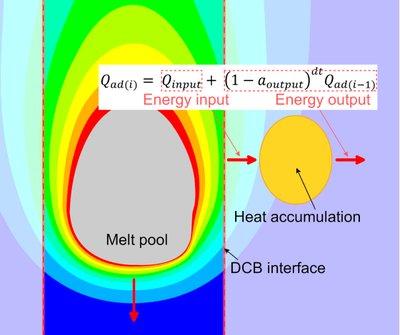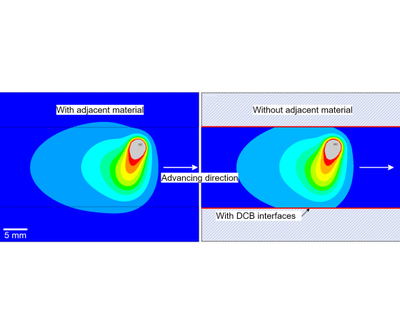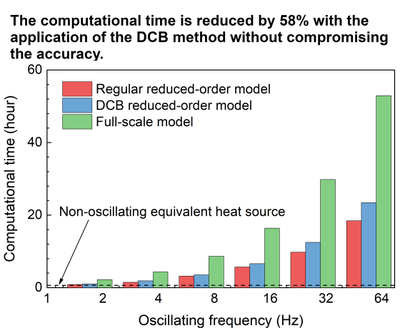


Reduced-order thermal modelling
Additive Manufacturing (AM) with a scanning laser (SL) to independently control melt pool shape has the potential to achieve part building with high geometric accuracy and complexity. An innovative dynamic convection boundary (DCB) method is proposed to develop a reduced-order finite element (FE) model to accelerate the thermal analysis of a SL process for AM. The DCB method approximates the thermal conduction of the adjacent material around the bead region by using a convection boundary condition that can be dynamically adjusted during the numerical solution. Thereby, a smaller problem domain and fewer elements are involved in the reduced-order FE modelling. A non-oscillating equivalent bar-shaped heat source was also introduced as a simplified substitution for a high oscillation frequency SL heat source. The DCB-based reduced-order thermal model achieved over 99 % accuracy compared to the full-scale model but reduced the element amount by 73 % and the computational time by 58 %. The use of the bar-shaped equivalent heat source can further enhance computational efficiency without compromising the prediction accuracy of a high oscillation frequency SL process. The DCB-based reduced-order thermal modelling method and equivalent heat source could be adopted to boost extensive parametric analysis and optimisation for novel AM processes. Study on large structures AM could also be facilitated by simplifying the computation at critical regions. This study can also enable efficient thermal analyses of different manufacturing processes, such as welding, cladding, and marking.
Information
- Research Area:Process Modelling
-
Investigators:
Chong Wang
, Gonçalo Pardal, Guangyu Chen, Xin Chen, Stewart Williams, Yongle Sun - Publications:https://doi.org/10.1016/j.jmatprotec.2023.118163
